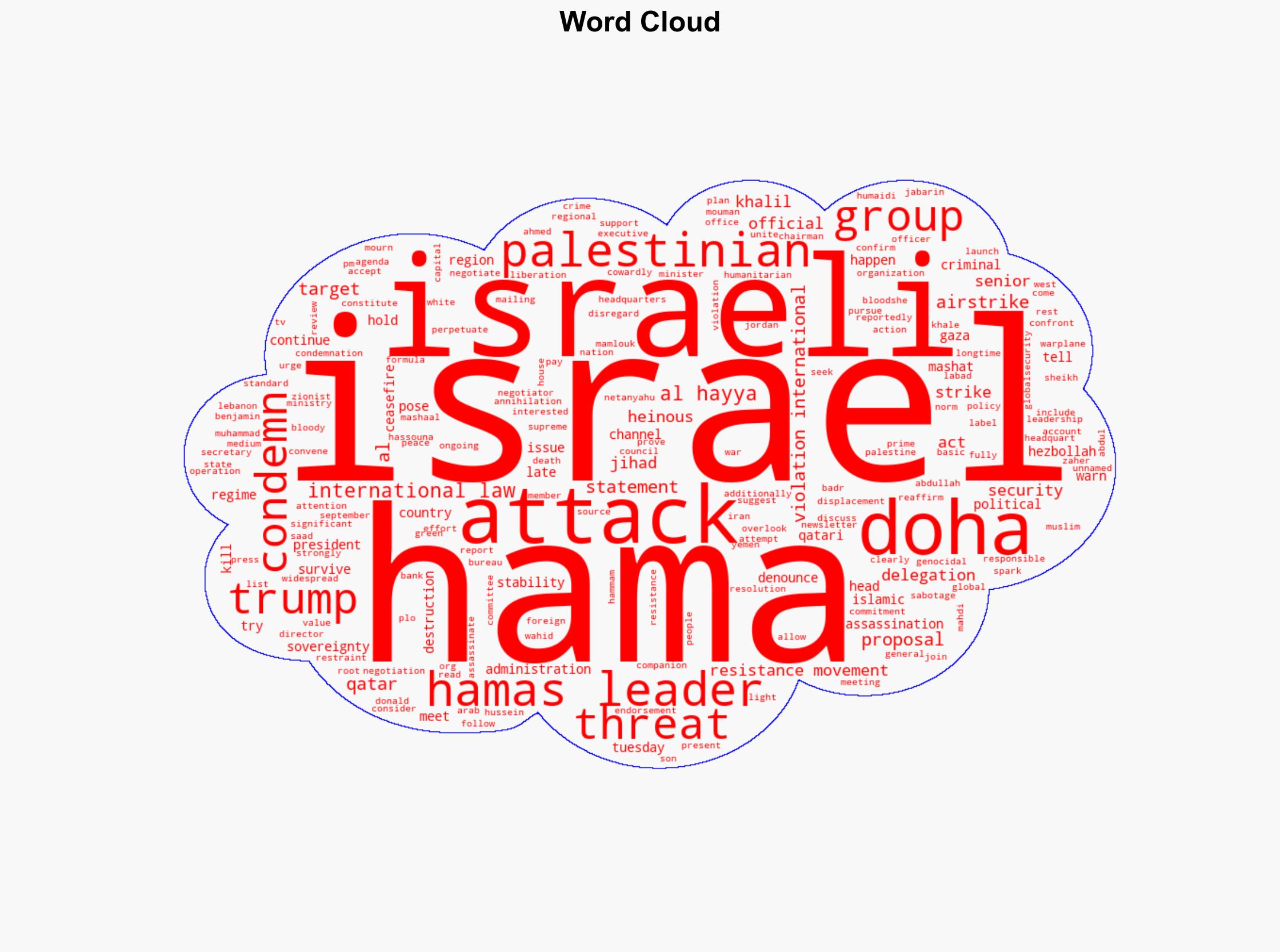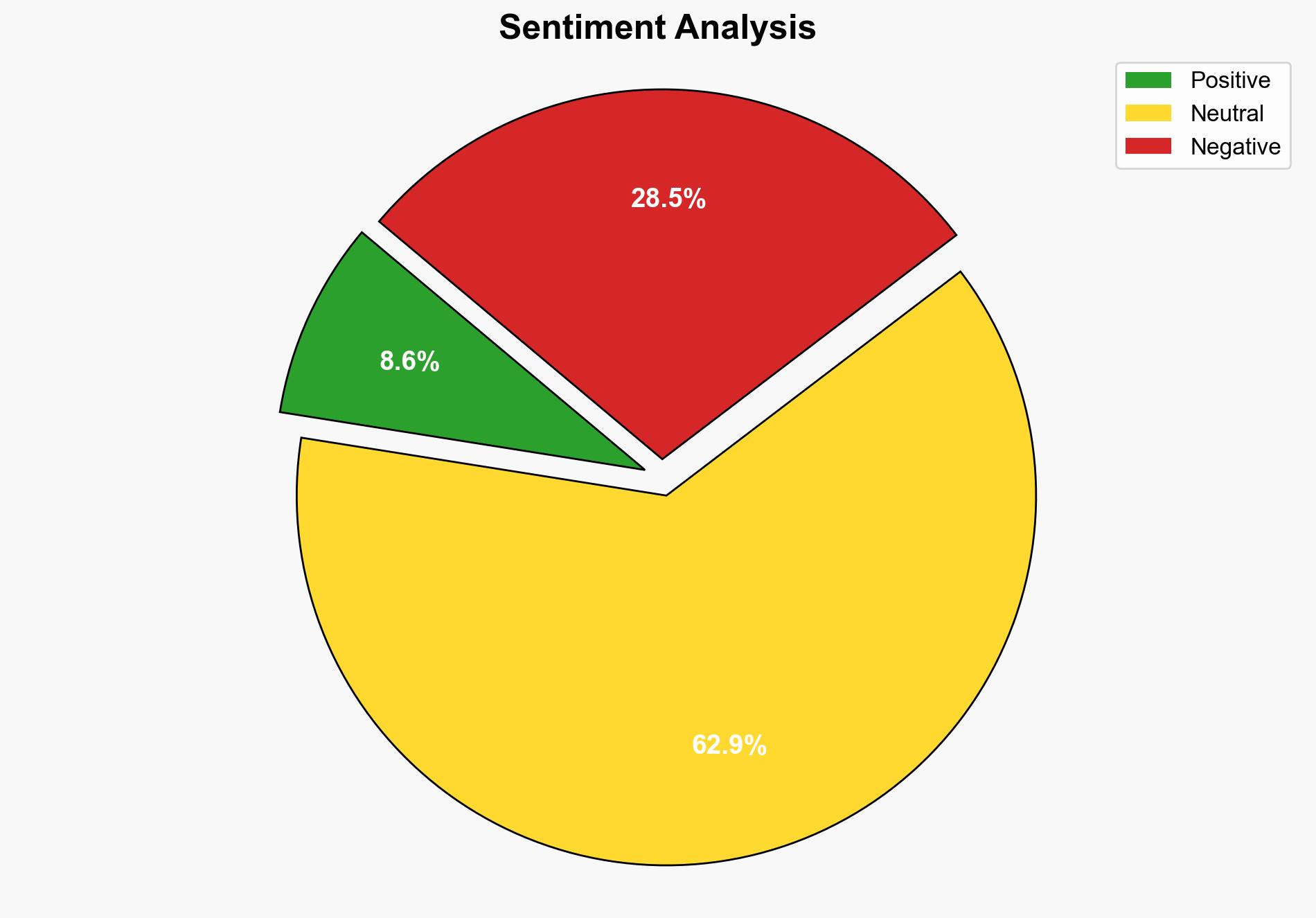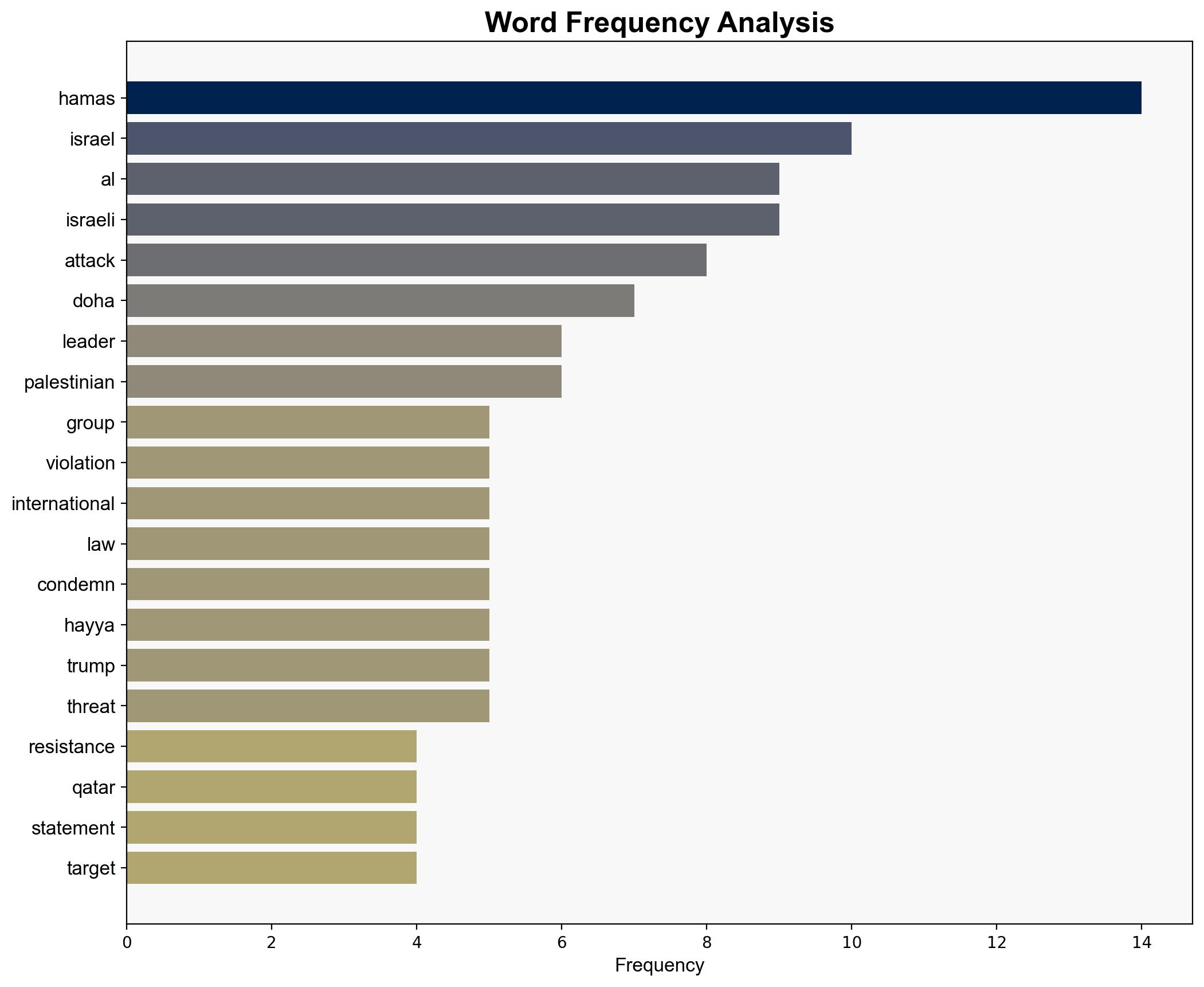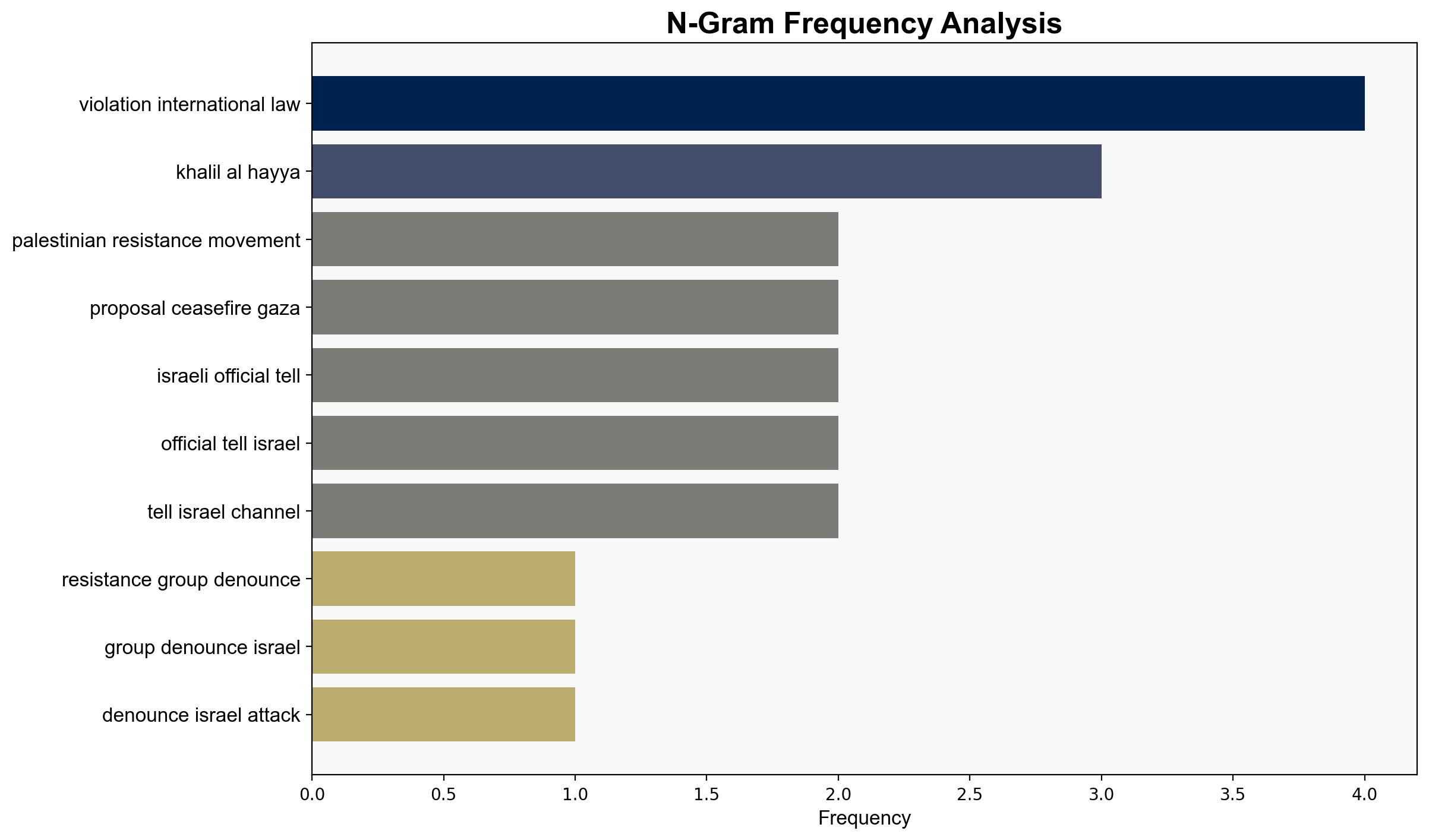Resistance groups denounce Israel’s attack on Hamas leaders in Doha – Globalsecurity.org
Published on: 2025-09-10
Intelligence Report: Resistance groups denounce Israel’s attack on Hamas leaders in Doha – Globalsecurity.org
1. BLUF (Bottom Line Up Front)
The most supported hypothesis is that Israel’s airstrike in Doha was a strategic move to disrupt Hamas leadership and negotiations, with tacit approval from the U.S. administration. Confidence level is moderate due to conflicting reports and potential biases in the source material. Recommended action includes diplomatic engagement to de-escalate tensions and a thorough investigation into the incident to clarify the facts.
2. Competing Hypotheses
1. **Hypothesis A**: The airstrike was a deliberate Israeli attempt to disrupt Hamas leadership and ongoing negotiations, potentially with U.S. backing.
– **Supporting Evidence**: Reports of an Israeli official stating that President Trump gave the green light; timing coinciding with ceasefire discussions.
2. **Hypothesis B**: The airstrike was an independent Israeli operation aimed at eliminating key Hamas figures, without explicit U.S. endorsement.
– **Supporting Evidence**: Lack of direct evidence linking U.S. approval; historical precedence of Israel conducting unilateral operations.
Using ACH 2.0, Hypothesis A is better supported due to the alignment of reported statements and strategic timing with U.S. interests in the region.
3. Key Assumptions and Red Flags
– **Assumptions**: Assumes Israel’s actions are strategically aligned with U.S. policy; presumes Hamas leadership was indeed the target.
– **Red Flags**: Potential bias in source reporting, especially from outlets with known political leanings; lack of independent verification of claims.
– **Blind Spots**: Limited information on Qatar’s internal response and potential covert diplomatic communications.
4. Implications and Strategic Risks
– **Geopolitical Risks**: Potential escalation of regional tensions, particularly involving Iran and Hezbollah; risk of retaliatory actions by Hamas.
– **Economic Risks**: Possible impact on regional markets due to heightened instability.
– **Cybersecurity Risks**: Increased likelihood of cyber operations targeting Israeli and U.S. interests.
– **Psychological Risks**: Heightened anti-Israel sentiment could fuel further radicalization and recruitment for extremist groups.
5. Recommendations and Outlook
- Engage in diplomatic efforts with Qatar and other regional actors to de-escalate tensions.
- Conduct an independent investigation to ascertain the facts surrounding the airstrike.
- Scenario Projections:
- Best Case: Successful diplomatic intervention leads to renewed ceasefire talks.
- Worst Case: Escalation into broader regional conflict involving multiple state and non-state actors.
- Most Likely: Continued low-level conflict with intermittent diplomatic efforts.
6. Key Individuals and Entities
– Khalil al Hayya
– Jihad Labad
– Abdullah Abdul Wahid Mouman Hassouna
– Ahmed al Mamlouk
– Badr Saad Muhammad al Humaidi
– Khaled Mashaal
– Benjamin Netanyahu
– Donald Trump
7. Thematic Tags
national security threats, counter-terrorism, regional focus




